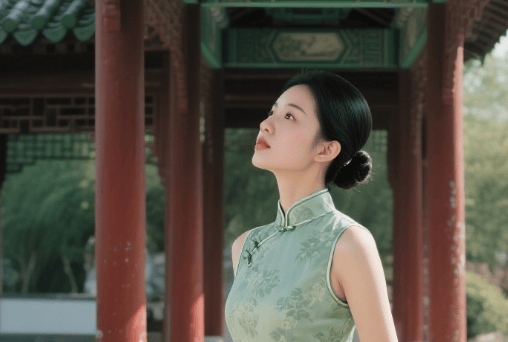What Does the "Qi" in "Qipao" Mean
The "qi" in "qipao" (旗袍) refers to the "banner" system of the Qing Dynasty, where Manchu citizens were organized into Eight Banners. Originally a practical, loose-fitting garment for Manchu court dress, the qipao evolved into a form-fitting, feminine dress in 1920s Shanghai, influenced by Western fashion and feminist ideals.
QIPAO KNOWLEDGE
6/27/20252 min read


The Literal Meaning of "Qi": Banners of the Qing Dynasty
The character 旗 (qí) directly refers to the "banner" system implemented by the Manchu-led Qing Dynasty (1644–1912). After overthrowing the Ming Dynasty, the Manchus organized their military and society into Eight Banners (八旗, Bā Qí), each named after a color or symbol (e.g., "Yellow Banner," "White Banner"). These banners served as administrative, military, and social units, and all Manchu citizens were required to register under one.
The term 旗袍 (Qípáo) literally translates to "banner gown" or "robe of the banner people". Originally, it described the loose-fitting, one-piece garments worn by both Manchu men and women as part of their official court dress. These early qipao were practical for horseback riding and archery, featuring straight silhouettes and minimal embellishments.
From Imperial Uniform to Cultural Symbol: The Qipao's Evolution
The qipao we recognize today—slim-fitting, feminine, and often adorned with intricate embroidery—is a far cry from its Manchu origins. Its transformation began in 1920s Shanghai, a melting pot of tradition and Western influence. Several factors drove this evolution:
Western Fashion Trends: As Chinese elites embraced Western tailoring, the qipao was reimagined with cinched waists, shorter sleeves, and side slits, emphasizing female curves.
Feminist Ideals: The New Culture Movement (1915–1923) promoted women's liberation, and the qipao became a tool of empowerment, blending modesty with allure.
Urban Sophistication: Shanghai's socialites adopted the qipao as a symbol of modernity, pairing it with heels, pearls, and bobbed hair.
Paradoxically, the garment named after Manchu "banner" culture became a hallmark of Han Chinese identity, illustrating how clothing can transcend its political roots to embody new ideals.
The Irony of History: A Symbol of Assimilation and Resistance
The Qing Dynasty mandated the qipao as part of its "queue order," forcing Han Chinese men to adopt Manchu hairstyles and clothing. For Han women, however, the qipao was not strictly enforced, allowing it to evolve independently. This historical tension adds layers to the garment's meaning:
Cultural Hybridity: The qipao embodies the fusion of Manchu and Han traditions, as well as Chinese and Western aesthetics.
Resistance Through Adaptation: By reshaping the qipao into a symbol of femininity, early 20th-century women subtly resisted imperialist and patriarchal norms.
Modern Interpretations: Beyond the "Qi"
Today, the qipao is celebrated globally, yet debates persist about its name and cultural ownership:
In Mandarin: The term qipao remains standard, though some argue it should be renamed to reflect its Han Chinese evolution.
In Cantonese: The garment is often called cheongsam (長衫), derived from the Cantonese term for "long gown," a nod to its male-inspired origins.
Global Perceptions: In the West, the qipao is frequently associated with "Orientalist" fantasies, highlighting the need for nuanced cultural understanding.
Conclusion: A Name That Tells a Thousand Stories
The "qi" in qipao is more than a syllable—it is a historical anchor linking the garment to China's Manchu past. Yet, the qipao's journey from imperial uniform to global fashion icon demonstrates how clothing can transcend its original context to become a canvas for cultural reinvention. Today, whether worn at weddings, film festivals, or fashion runways, the qipao continues to drape itself in new meanings, proving that some symbols, like their names, are eternal works in progress.
The qipao (旗袍), a form-fitting silk dress with a high collar and slit skirt, is celebrated globally as a symbol of Chinese elegance. Yet, the first character in its name—旗 (qí)—holds deeper historical and cultural meanings that reflect China's complex past. This article explores the origins of "qi," its connection to Manchu heritage, and how this single character shapes the garment's identity.


